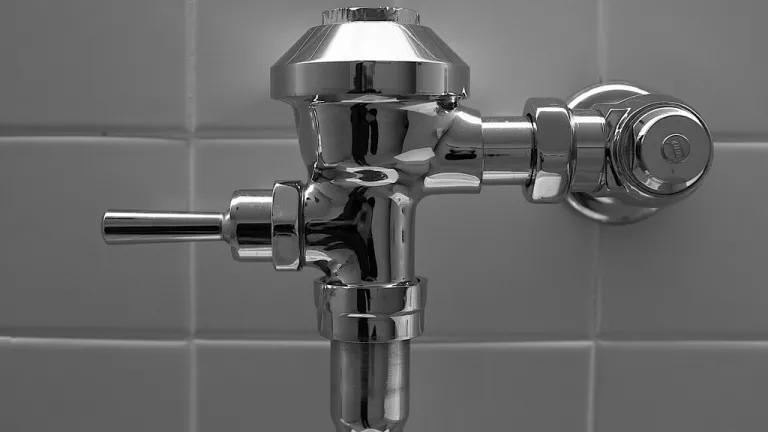Bathroom Bandits
Law-breaking urinals? California's water rules will force new fixtures to toe the water line.

California is trying to take the water out of “water closet,” demanding better toilet tech as a way to conserve in these dry times. On Thursday, the California Energy Commission voted to adopt stricter standards for water-using products, such as toilets, urinals, and faucets.
As of January 1, 2016, older kitchen and bathroom fixtures will be illegal, but you don’t have to rush to remodel just yet. The new rules apply only to newly installed infrastructure—your old john wouldn’t violate the law.
The new rules come on the heels of Governor Jerry Brown’s announcement by that by next February, the state’s local water suppliers must cut their output by 25 percent. Reducing water use at the loo from 1.6 gallons to 1.28 gallons per flush will help water districts reach that goal. New urinals will ease water demand, too, guzzling just 16 ounces (down from up to a gallon) with each use. Then, when you wash your hands at the sink, faucets will pour at a rate of 1.2 gallons per minute instead of the current 2.2 gallons. Golf courses, parks, and cemeteries will also face water cuts.
“It will eventually cut California water use by 100 billion gallons per year,” says Noah Horowitz, a senior energy scientist at the NRDC (disclosure). “That’s equivalent to three times the amount of water San Francisco uses.”
Each local supplier will implement different limits, with lower restrictions for those districts that have already reduced their water consumption. Fines for a district that goes over the limit could be up to $10,000 a day. Penalties for individuals would also depend on where they live and past behavior. The Los Angeles Department of Water and Power, for example, can issue fines from $100 to $200, depending on whether the household is a repeat offender.
Now in the fourth year of drought, some concerned citizens have already begun to take shorter, colder showers and cut back on their laundry loads. Green lawns have been pretty much out of the question for a while now (unless you paint them, of course).
Even if Californians are willing to do their part, many can’t help but notice that two major industrial sectors—farming and fracking—are left untouched by Brown’s mandate.
Fracking operations used close to 70 million gallons of water last year—and have been known to inject drilling wastes into aquifers, contaminating groundwater. But the biggest water user by far is agriculture, which accounts for 80 percent of the state’s water use. Many farmers argue that their $40 billion industry provides 420,000 Californians with jobs and much of the country with produce—all those tomatoes, avocados, broccoli, and almonds need hefty amounts of water to grow. They also point out that farmers have already experienced mandatory cutbacks when it comes to the wet stuff.
Even so, if the drought continues to run the state dry (as it’s expected to do), California may have to put the lid on other water wasters as well.
This article was originally published on onEarth, which is no longer in publication. onEarth was founded in 1979 as the Amicus Journal, an independent magazine of thought and opinion on the environment. All opinions expressed are those of the authors and do not necessarily reflect the policies or positions of NRDC. This article is available for online republication by news media outlets or nonprofits under these conditions: The writer(s) must be credited with a byline; you must note prominently that the article was originally published by NRDC.org and link to the original; the article cannot be edited (beyond simple things such grammar); you can’t resell the article in any form or grant republishing rights to other outlets; you can’t republish our material wholesale or automatically—you need to select articles individually; you can’t republish the photos or graphics on our site without specific permission; you should drop us a note to let us know when you’ve used one of our articles.

Latina Farmworkers Speak Out about the Hazards of Life in California’s Fields
The Chlorpyrifos Ban Is a Win for Science—and Children
Washington State Adds Emergency Rules to Protect Workers from Heat and Wildfire Smoke